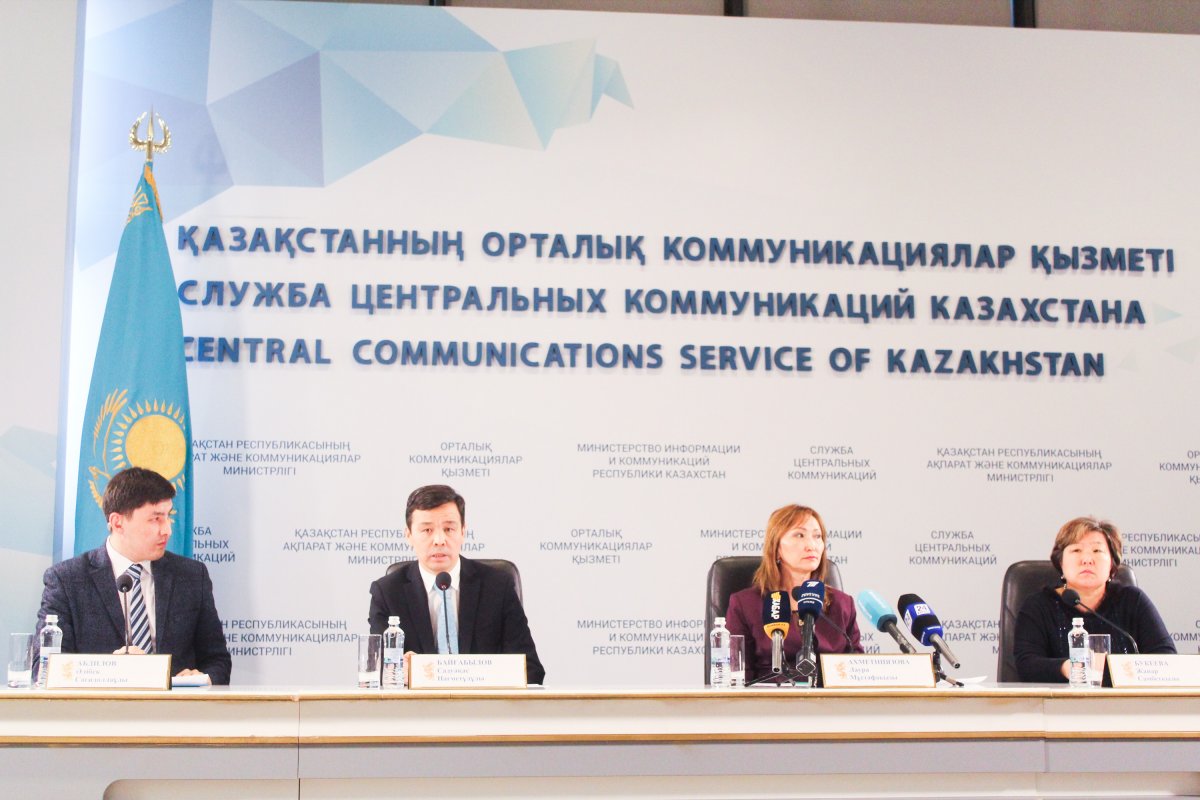The Ministry of Health of the Republic of Kazakhstan: The situation on serous meningitis in Kazakhstan is stable.
Currently, there is a seasonal increase in the incidence of meningitis. As a rule, serous meningitis manifests itself from May to October. With the onset of the first frost disappears. There are practically no complications.
- Since the beginning of 2018, the diagnosis of meningococcal infection has been confirmed in 85 people, including in Almaty and Almaty region - 51 cases. Since the beginning of the year, 15 deaths have been registered. After anti-epidemic measures, the incidence of meningococcal infection in the country has been stabilized. Since June 30, isolated cases of meningococcal disease have been registered in the country, ”said Laura Akhmetniyazova, Deputy Chairperson of the Public Health Committee of the Ministry of Health of the Republic of Kazakhstan, in the Central Communications Service.
According to the deputy chairman of the Public Health Committee of the Ministry of Health of the Republic of Kazakhstan, the incidence of meningococcal disease is 0.5 per 100 thousand people. This is 4 times lower than the threshold level. Our average long-term incidence rate was 2.1.
Up to 700 cases of serous meningitis are registered in the republic annually, in 2017, 701 were registered. During 9 months of this year, 575 cases of serous meningitis were registered, of which 196 were in Astana. In all cases, anti-epidemic measures are carried out.

What is the difference between meningitis?
Meningitis is an inflammation of the membranes of the brain and spinal cord. Meningitis due to the occurrence is divided into three main groups: meningococcal, purulent and serous meningitis.
- Patients with meningococcal meningitis present the greatest infectious danger to others, since the disease proceeds in a more severe form and the patient intensively releases the pathogen into the external environment when coughing and sneezing. With suspected meningococcal infection in the hospital there is one patient resident of Akmola region. Laboratory studies in the work. The patient's condition is stable, there is a positive trend, - said the representative of the Ministry of Health.
It should be noted that a sudden onset is characteristic of meningococcal meningitis: a severe headache, vomiting suddenly appears, after 6-15 hours a rash, the temperature reaches 39-40 ° С, chills. Pale skin. There is general weakness, pain in the back and limbs. Patients are thirsty, appetite is reduced.
The disease can occur in a mild, and therefore very insidious form, imitating such relatively "harmless" diseases as the flu, sore throat, rhinitis, tonsillitis, etc.
The source of infection is sick people and “healthy carriers”, i.e. people who do not have any clinical manifestations, but they are carriers of meningococcus.
When favorable conditions arise, such as weakening of the body's defenses caused by hypothermia, disease, overwork, meningococcus rapidly penetrates into the lining of the brain and causes inflammation.
Patients with purulent meningitis do not pose a danger to others, since the patient in these stages of the disease does not emit the pathogen into the external environment.
Purulent meningitis is purulent inflammation of the meninges, in the presence of a primary focus, i.e. the disease develops against the background of an infection already present in the body that penetrates into the lining of the brain. Most often occurs with long-lasting infections in the main ENT organs: acute and chronic purulent otitis, situsitis, sinus, frontitis.

Penetration of pathogens of purulent meningitis contributes to a weakened state of the body's immune system, which can be caused by frequent acute respiratory viral infections, hypovitaminosis, stress, physical overload, and a sharp change in climate.
Serous meningitis of viral origin is caused by enteroviruses, as well as some other types of viruses. They differ from meningococcal and purulent meningitis in a benign course and very rarely give complications.
The source of the infection is a sick person and a “healthy” virus carrier. The virus is transmitted through water, vegetables, fruits, food, dirty hands. It can be transmitted by airborne droplets with large crowds of people. Infection often occurs when bathing in water bodies and swimming pools.
- The situation in Astana on serous meningitis is stable. Last week, October 18, we had 8 cases. On Saturday, three were discharged. Five stayed in hospitals, but on Saturday two more were hospitalized. That is, the process of renewal is in progress, - said the head of the Department of Public Health of Astana Sadvakas Baygabulov.
According to him, serous meningitis is not so dangerous and not contagious. Initially, the patient comes with symptoms such as headache, nausea, vomiting, fever, on the second or third day headache and nausea disappear. On the fifth day, the temperature stabilizes. The course of the disease is favorable and, as a rule, the child is discharged on day 10-12.
It is necessary to draw the attention of parents to measures that prevent meningitis. They are elementary: do not supercool and dress according to the weather; more often air the room; wash hands thoroughly, maintain the immune system, regularly exercising and adhering to a healthy diet.












